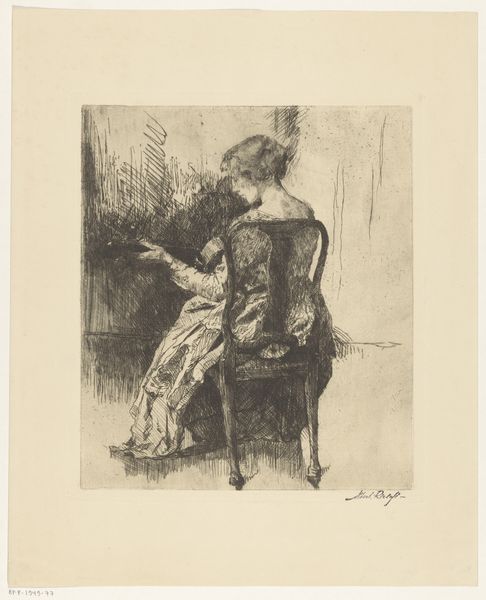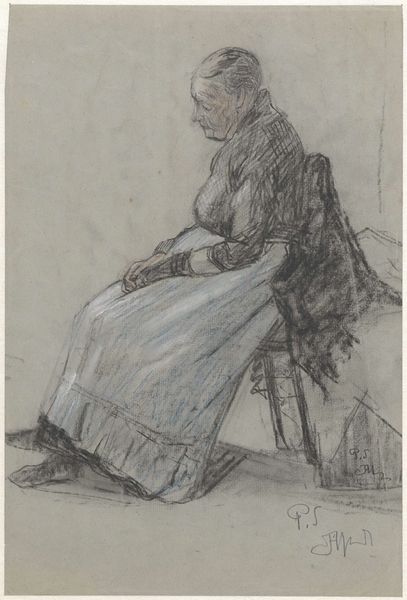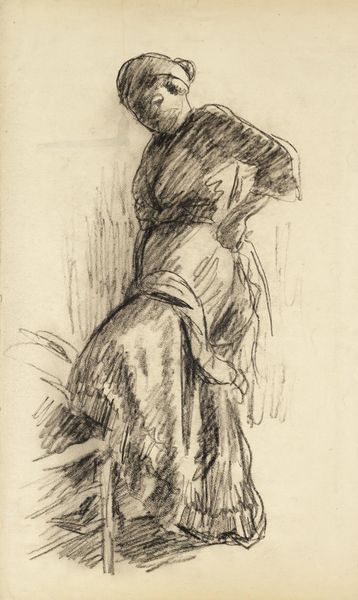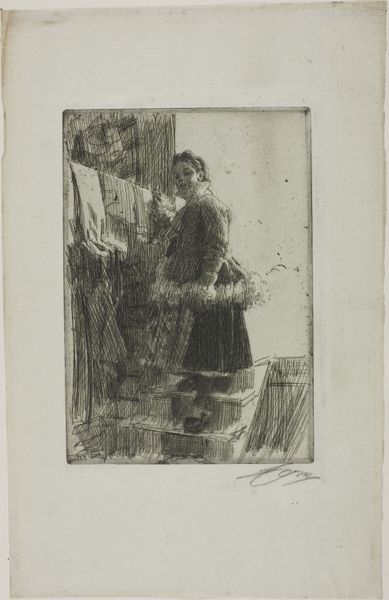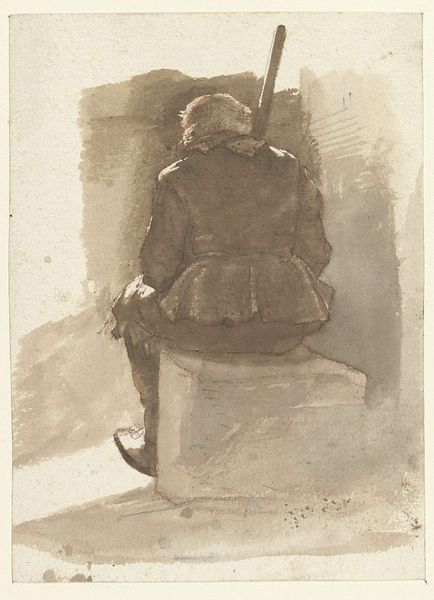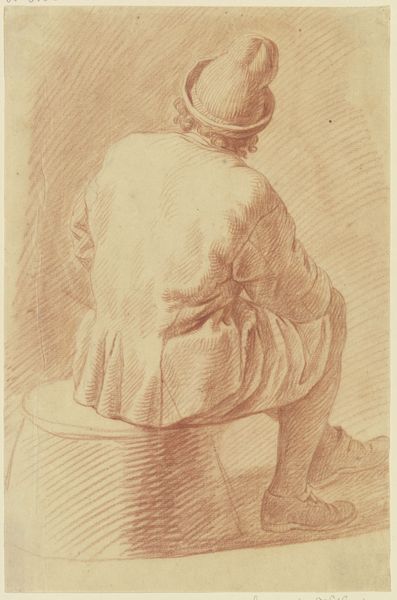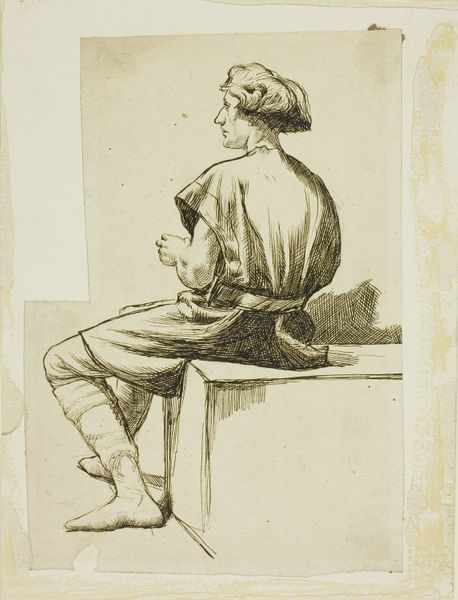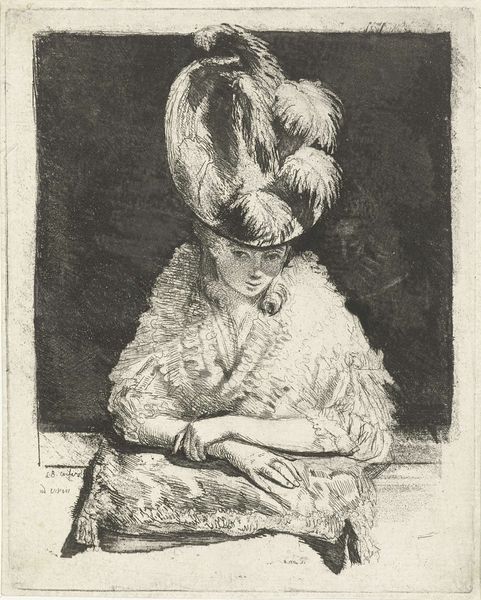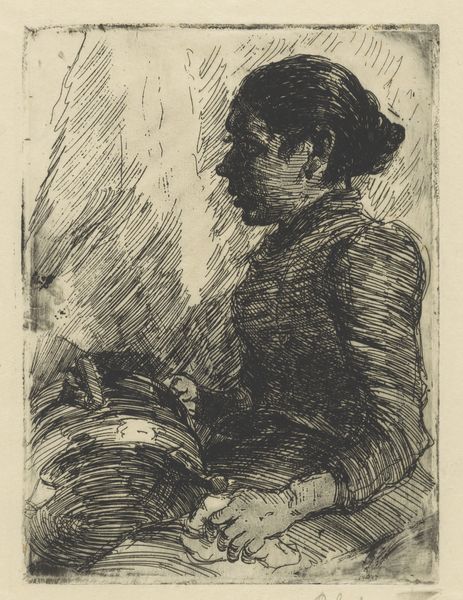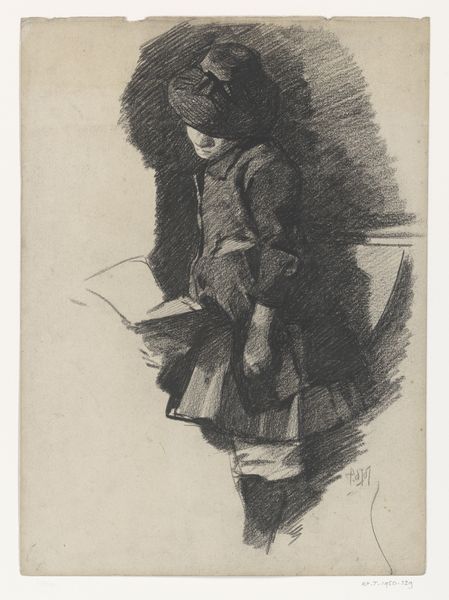
drawing, charcoal
#
portrait
#
drawing
#
impressionism
#
charcoal drawing
#
charcoal
#
academic-art
#
charcoal
Dimensions: 42.86 x 34.61 cm
Copyright: Public domain
Editor: Here we have William Merritt Chase’s "Figure Study (I)" from 1885, a charcoal drawing. It’s interesting how the artist chose to depict the subject from behind. What formal qualities stand out to you in this piece? Curator: Immediately apparent is Chase’s masterful manipulation of light and shadow using charcoal. Observe the dynamic contrast, particularly in the rendering of the dress and chair. The deep blacks create a sense of weight and volume, while the lighter, sketchy lines suggest form and texture without meticulous detail. It verges into abstraction. Editor: So it's the contrast that interests you most. Do you think that adds to the drawing's sense of modernity? Curator: Precisely. It transcends a simple figurative study by focusing on tonal relationships and gestural marks. Notice how the composition is structured; the figure is centrally positioned, anchored by the strong vertical lines of the chair, but the blurred details soften any sense of rigid structure. It’s less about accurate representation, and more about the expressive potential of the medium itself. It anticipates, somewhat, the abstraction to come. Editor: That's a great point. I hadn’t considered how the chair's structure balances with the fluid dress. Curator: Furthermore, examine the subtle variations in the charcoal strokes. How do they contribute to the overall visual experience? Editor: Now I see it, the varied strokes almost make the figure seem alive. Curator: Indeed. And have you noticed Chase's technique for implying volume on her upper body? Editor: Very subtle and elegant. Thinking about Chase's marks in this piece and the composition has certainly transformed how I'm looking at the artwork. Curator: Yes, observing the structural and material elements really does allow us to understand the artistry.
Comments
No comments
Be the first to comment and join the conversation on the ultimate creative platform.

